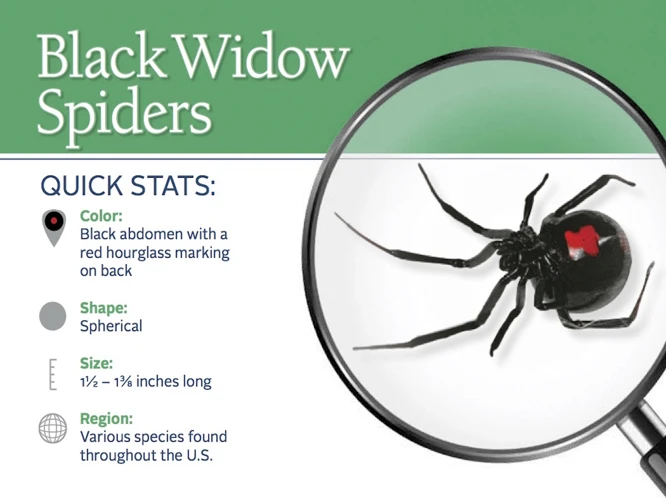Have you ever come across a black widow spider and wondered about the intricacies of their life cycle? The construction and placement of their egg sacs, in particular, is a fascinating process that demonstrates the remarkable adaptations of these creatures. In this comprehensive guide, we will explore every step of the egg sac creation process, from how they are built to where they are placed. We will also delve into the life cycle of the spiderlings inside the sac, as well as the challenges they face during their maturation and emergence. Join us as we uncover the secrets of the egg sacs of black widow spiders.
What is an Egg Sac?
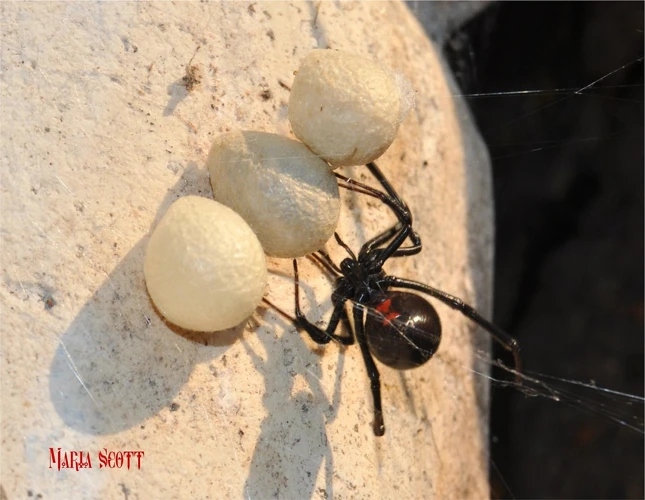
The Black Widow Spider’s reproductive process is both fascinating and curious. From the construction of Egg Sacs to the emergence of Spiderlings, there are numerous unique factors to consider. Understanding what an Egg Sac is and how it is produced is a great starting point in comprehending the entire process. Strongly associated with the female Black Widow spiders, the Egg Sacs occupy a vital spot in the arachnid reproduction process. In this article, we’ll explore the significance of Egg Sacs for Black Widow Spiders, the different types of Egg Sacs produced, and the process by which they are constructed. If you want to learn more about the survival, competition, and predators threatening the Egg Sacs and the Spiderlings, check out the following links: Black Widow Eggs Hatch Duration, Egg Cannibalism in Black Widow Spiders, Hatching Survival of Black Widow Spiderlings, Temp of a Black Widow Egg, Predation of Black Widow Spider Eggs, Sperm Storage in Black Widows, Parental Investment in Black Widow Eggs, Factors of Egg Dev in Black Widow, and Egg Hatching Synchrony and Black Widow Success.
Overview of Egg Sac Construction
Egg sac construction is a complex and meticulous process carried out by female black widow spiders after mating. Once fertilized, the female spider spins a silk cocoon creating an incubation chamber for the eggs. This cocoon is spun in a spherical or elliptical shape, measuring approximately 9 mm in diameter.
The process of spinning an egg sac is a careful and deliberate process. The female spider often uses multiple silk layers, creating a strong, protective cocoon. This cocoon is often adorned with bits of debris, sticks, and leaves to camouflage it and make it more difficult for predators to detect.
The silk used to spin the egg sac is a unique type of silk, more robust and elastic than normal spider silk. The silk is synthesized in the spider’s silk glands, and different glands create different types of silk. The egg sac silk is produced in the major ampullate gland, which creates silk with high tensile strength, making it ideal for egg sac construction.
Once the egg sac is complete, the female spider deposits her eggs within the cocoon, typically laying around 250 eggs, although the exact number can vary from 50 to 750. After depositing the eggs, the female spider seals the cocoon, completing the egg-laying process.
It is interesting to note that a female black Widow spider can produce multiple egg sacs throughout her lifetime, potentially laying several hundred eggs in her lifetime. The exact number of egg sacs a female will produce depends on various factors such as environmental conditions, availability of prey and mating opportunities.
Intriguingly, the size and shape of the egg sac can vary slightly depending on the species of black Widow spider, with some species producing spherical egg sacs while others produce elongated egg sacs. This variation indicates that different species of black Widow spiders have adapted to different environmental conditions.
Understanding the egg sac construction and laying process of black widow spiders is vital to understand their life cycle and habits. Knowing how many egg sacs a female can produce can provide researchers with valuable information about black widow populations. In fact, scientists often use the number of egg sacs in an area to determine the spider population density, and the number of males and females present.
It is fascinating to learn that black widow spiders have a unique way of creating their egg sacs, using specialized silk and carefully selecting the ideal location to protect and nurture their eggs. Visit our article on black widow egg sac counts to explore more about these remarkable spiders.
Types of Egg Sacs Produced by Black Widow Spiders
Black widow spiders are known for producing different types of egg sacs. These sacs can vary in size, shape, and color depending on the species of black widow spider.
– Round Egg Sacs: The round egg sac is the most common type of egg sac produced by black widow spiders. These egg sacs are typically small, round, and pale yellow in color. They are about the size of a pea and contain a few dozen eggs.
– Oval Egg Sacs: Oval egg sacs are larger than round egg sacs and can contain up to several hundred eggs. These sacs have a slightly elongated shape and are covered in a dense layer of silk.
– Irregular Shaped Egg Sacs: Irregular shaped egg sacs are uncommon, but they can be produced by some species of black widow spiders. As their name suggests, these sacs have an irregular shape and can contain a varying number of eggs.
– Papery Egg Sacs: Papery egg sacs are rare but can be produced by some species of black widow spiders. These sacs are thin and translucent, resembling a flat sheet of paper. They have a delicate, papery texture and can contain up to several hundred eggs.
It is important to note that not all black widow spiders produce all types of egg sacs. Additionally, the appearance of egg sacs can vary even within the same species depending on the environmental conditions in which they are produced.
Where are the Egg Sacs Placed?
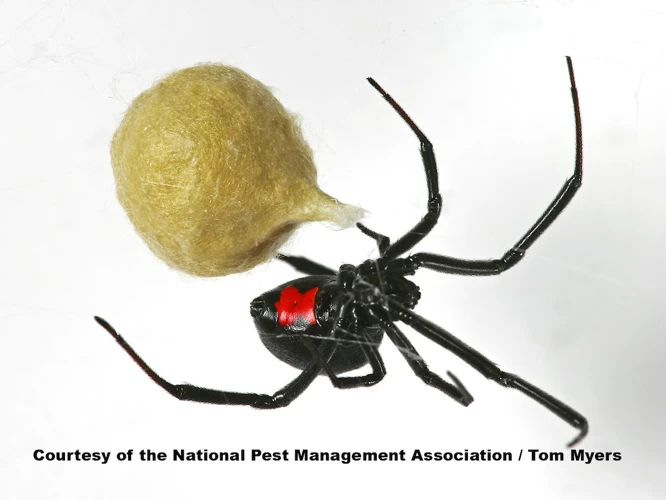
As black widow spiders prepare to lay their eggs, they must choose the ideal location for their egg sac. This decision is crucial for the survival of their offspring. The location must provide protection from predators, ensure proper climate conditions, and maintain enough food sources for the spiderlings to thrive. But how do these arachnids determine the perfect spot to lay their eggs? Let’s dive into the complex process of egg sac placement and uncover the intriguing methods these spiders use to ensure the survival of their offspring.
Choosing the Ideal Location
When it comes to choosing the ideal location for the egg sac, Black Widow spiders are skilled architects and designers. They carefully select the best spot to ensure the survival of their offspring.
Factors Considered for Egg Sac Placement
Black Widow spiders take into account several factors before deciding on the ideal location for the egg sac, including:
| Factor | Description |
|---|---|
| Temperature | Black Widow spiders prefer warm and humid environments for their egg sacs. They may choose areas with direct sunlight or in the vicinity of heat-emitting sources like electrical appliances or lights. |
| Moisture | The egg sac must be placed in an area with enough humidity to prevent the desiccation of the eggs. Black Widow spiders may prefer to spin their egg sacs in areas with a good supply of water, such as near a water source. |
| Security | Black Widow spiders are excellent at hiding their egg sacs in hard-to-reach or hard-to-see areas to keep them safe from predators and other threats. They may choose areas with ample cover, such as cracks, crevices, or inside plant material. |
Black Widow spiders may also place their egg sacs in areas with abundant sources of prey (insect populations) to ensure the availability of food for their hatchlings.
Once the Black Widow spider selects the ideal location, she then spins her egg sac, which is often a small, papery ball that she attaches to a surface using silken threads. The sac may be either white or beige and can contain up to 900 individual eggs in some species.
Protection of the Egg Sac
Black Widow spiders are highly protective of their eggs and will fiercely defend them if necessary. They may even consume their own egg sac if they sense danger. Fortunately, the tough, papery exterior of the egg sac provides some natural protection against predators, such as birds, wasps, and other spider species.
In some cases, Black Widow spiders may even produce multiple egg sacs to improve their chances of survival. Each sac may be placed in a different area, decreasing the risk of predator detection and thus providing greater safety for the spiderlings when they hatch.
The location of the egg sac plays a crucial role in the survival of the Black Widow spider’s offspring. The spider’s natural instincts and careful selection process ensure that the eggs have the best chance of survival, and it is fascinating to learn about the factors that influence this decision.
Protection of the Egg Sac
In order to ensure the successful development and hatching of the eggs inside the sac, black widow spiders take great care to protect the sac from various threats. Let’s take a closer look at some of the methods used by these spiders to keep their egg sacs safe.
One of the first lines of defense against potential predators is the construction of the egg sac itself. Black widow spiders often use tough materials, such as silk and debris, to create a durable and protective casing for the eggs. This can help prevent damage from other insects, birds, and small mammals that may come across the sac.
In addition to the physical construction of the sac, black widow spiders also exhibit behaviors that help protect the eggs. For example, female black widows will often remain nearby the sac, waiting and watching for potential threats. They may also exhibit aggressive behavior towards animals that get too close, such as biting or spraying venom.
Another key method used for protection is camouflage. Some species of black widow spiders have evolved to match the colors and patterns of their surroundings, making it more difficult for predators to spot the egg sac. This is particularly effective when the sac is placed in an area with similar coloring, such as among leaves or twigs.
Black widow spiders often choose to place their egg sacs in hidden and hard-to-reach locations. This can include crevices in walls, under rocks, or deep in vegetation. By doing so, the sac is less likely to be disturbed, and any potential predators will have a harder time accessing it.
Finally, black widow spiders also have the ability to replace a lost or damaged egg sac with a new one. This is accomplished through the use of specialized reproductive organs, which allow the female to produce multiple sacs over the course of her lifespan.
The protection of the egg sac is a crucial component of the black widow spider’s reproductive strategy. By using a combination of physical attributes, behavioral adaptations, and strategic placement, these spiders are able to ensure the survival of their offspring despite threats from other animals and environmental factors.
| Methods of Egg Sac Protection | Description |
|---|---|
| Physical construction | Use of tough materials and debris to create a durable casing for the eggs |
| Behavioral defenses | Female spiders remain nearby and exhibit aggressive behavior towards potential threats |
| Camouflage | Matching colors and patterns of surroundings to make the sac harder to spot |
| Placement | Choosing hidden or hard-to-reach locations for sac placement |
| Egg sac replacement | Ability to produce multiple sacs over the course of the female’s lifespan, replacing lost or damaged sacs |
What Happens to the Eggs Inside the Sac?
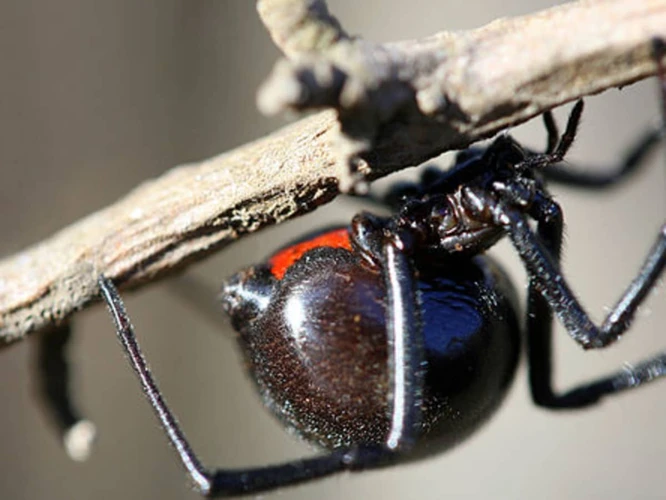
As the egg sac is completed and placed by the black widow spider, a mysterious and fascinating process begins inside. The intricate details of fertilization, development, and hatching inside the sac are both perplexing and awe-inspiring. The survival of these spiderlings lies in their journey from egg to emergence as they compete within the sac and face threats from the outside world. Let’s dive into the mysterious world inside the black widow’s egg sac and explore what happens to the eggs inside.
Fertilization and Development
Once the female black widow spider deposits her eggs into the silk of the sac, fertilization occurs. Inside the sac, the eggs begin to develop, and the spiderlings grow. This process is called embryonic development and can take anywhere from 20 to 90 days, depending on the temperature and other environmental factors.
Male Involvement in Fertilization: The male black widow spider plays a vital role in the fertilization of the eggs inside the sac. During mating, he deposits his sperm into the female’s body, where it is stored until the eggs are ready to be fertilized.
Environmental Factors Affecting Development: The temperature and humidity of the environment are crucial factors in the development of the eggs and spiderlings. Too much heat or not enough moisture can lead to the eggs drying out and failing to develop properly. Conversely, too much moisture can result in the eggs becoming moldy or developing harmful bacteria.
Number of Eggs per Sac: On average, a female black widow spider will produce between 100 and 400 eggs per sac. However, some females can produce up to 900 eggs in a single sac.
| Factor | Effect on Development |
|---|---|
| Temperature | Too high or too low temperature can lead to failure of embryonic development |
| Humidity | Too much or too little moisture can make the eggs dry out or become moldy |
| Number of eggs per sac | Affects the competition for food and resources among the emerging spiderlings |
It is fascinating how the fertilization and development phase of black widow spider egg sacs determines the survival of the spiderlings. These spiders face different environmental factors that contribute to or hinder their growth, and the number of eggs per sac can also determine the survival rate of the spiderlings as competition among them arises. It is a complex and delicate process that is necessary for the black widow spider population’s continuation.
Hatching of Spiderlings
Once the fertilized eggs inside the egg sac have completed their development, the spiderlings are ready to hatch and emerge to the outside world. Hatching typically occurs after about 20 to 30 days, depending on environmental conditions such as temperature and humidity.
During the hatching process, the tiny spiderlings use their egg teeth to tear open the silken sac. They emerge in a group and immediately start dispersing in different directions. The spiderlings are incredibly small, measuring only around 1/16th of an inch, and are very vulnerable to predators.
1. First Meal and Dispersal
The newly hatched spiderlings are hungry and will start searching for food almost immediately. They are cannibalistic and may even start feeding on their weaker siblings. The spiderlings also begin to disperse from the egg sac and start their independent lives.
2. Ballooning
Black widow spiderlings have a unique method of dispersal known as ballooning. They climb to the highest point of their location and release a silken thread into the air. The light breeze carries the spiderling away, allowing it to disperse over great distances.
3. Growing and Developing
As the spiderlings grow, they will molt several times and undergo various stages of development. They will need to feed frequently to fuel their rapid growth. Black widow spiders have a relatively short lifespan, typically living for only one to three years, during which they will mature and reproduce.
The hatching of spiderlings is the culmination of the egg sac construction and placement process for black widow spiders. It marks the beginning of a new generation of spiders that have to survive in a world full of challenges and dangers. From competition amongst themselves to predators and the environment, the spiderlings have to fight to survive and eventually reproduce themselves.
How Long Do the Spiderlings Stay in the Egg Sac?
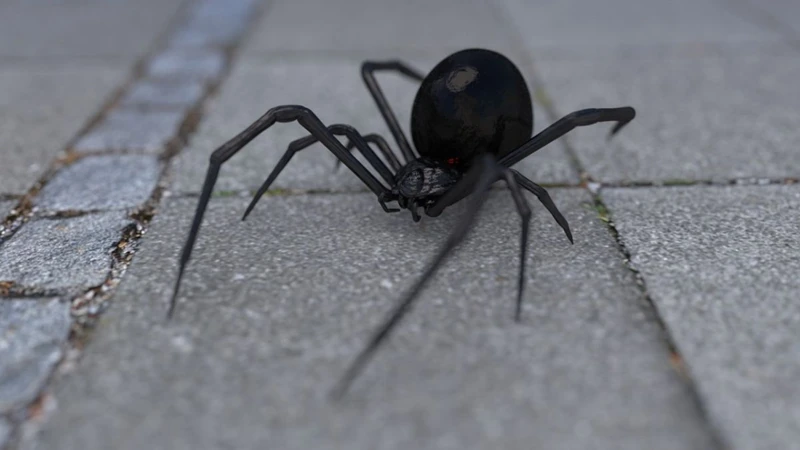
As if the process of egg sac construction and placement wasn’t intriguing enough, the length of time that the spiderlings stay within the protection of the sac adds another layer of fascination to the life cycle of black widow spiders. You may be surprised to learn that these spiderlings remain in the egg sac for a significant amount of time, undergoing important development before emerging into the world. Let’s delve deeper into the duration of their stay and what happens during this crucial period.
Maturation and Emergence
Once the spiderlings inside the egg sac have fully developed and matured, they will emerge from the safety of their protective sac. This process can take anywhere from a few weeks to several months, depending on environmental factors such as temperature and humidity.
During this maturation process, the spiderlings will grow and molt several times. They will also begin to develop their distinctive black and red markings, which are characteristic of Black Widow spiders. Once they have grown large enough and are strong enough to survive on their own, they will emerge from the egg sac in search of food and shelter.
Table: Factors Affecting Maturation and Emergence of Spiderlings
| Factor | Effect on Maturation and Emergence |
|---|---|
| Temperature | Higher temperatures can accelerate the maturation process and result in earlier emergence from the egg sac. |
| Humidity | Higher humidity levels can also accelerate maturation and emergence, as well as increase survival rates of the spiderlings. |
| Competition | Spiderlings that are overcrowded in the egg sac may take longer to mature and emerge due to competition for resources. |
| Predator Threats | Spiderlings that sense predator threats may delay their emergence from the egg sac until it is safer to do so. |
It’s important to note that not all spiderlings inside the egg sac will survive to reach maturity and emerge. This is due to factors such as competition for resources and predator threats. Only the strongest and most resilient spiderlings will make it to the emergence stage. Once they do emerge from the egg sac, they will be fully capable of hunting and surviving on their own, continuing the cycle of Black Widow Spider reproduction and egg sac construction.
Survival of the Fittest
One of the most fascinating aspects of black widow egg sacs is the struggle for survival that takes place inside. Once the spiderlings emerge, they face a number of challenges that will determine which ones will thrive and which ones will perish. It’s a tough world out there for these tiny creatures, and only the strongest and most resourceful will make it to adulthood. Let’s take a closer look at the competition and threats that the spiderlings face in their quest for survival.
Competition Among Spiderlings
As the spiderlings within the egg sacs begin to develop and mature, competition among them starts to arise. Due to limited resources, including food and space, not all of the spiderlings will survive. The stronger and more aggressive ones tend to dominate, while the weaker ones are often cannibalized or die of starvation.
This survival of the fittest mentality is common among many species, and the black widow spider is no exception. The competition among spiderlings can be so intense that they may start cannibalizing each other from the moment they hatch. This is also known as intra-specific predation.
The spiderlings rely on their strong jaws and venom to kill and consume their siblings. They will also consume the egg sac itself as a source of nutrients if they run out of other food sources. This cannibalistic behavior is crucial to ensure that only the strongest and fittest individuals survive and continue the species.
However, not all spiderlings exhibit the same level of aggression. Some may be more passive and shy, leading to them being outcompeted by their more dominant siblings. It is important to note that not all egg sacs produce the same number of spiderlings, which directly affects the level of competition among them.
Ultimately, only a few spiderlings will survive to emerge from the egg sac. These individuals will then face a new set of challenges and competition as they navigate their environment and hunt for food. However, the strong survival instincts they developed during their infancy will serve them well in their journey towards adulthood.
Predators Threatening the Egg Sacs and Spiderlings
As the Black Widow Spiderlings emerge from the egg sac, they are small, delicate, and vulnerable to numerous predators that threaten their survival. These predators include insects, birds, and reptiles that consider Black Widow Spiderlings a tasty snack.
| Predator | Threat Description |
|---|---|
| Insects | Insects such as ants and wasps can attack and feed on the spiderlings while they are still weak and small. |
| Birds | Birds prey on the spiderlings as they are easy targets. Young birds also mistake these spiderlings as food. |
| Reptiles | Reptiles such as lizards and snakes prey on spiderlings and attack them in their shelter. |
While Black Widow Spiders themselves are known for their potent venom and can defend against some predators, the spiderlings are still highly susceptible to attacks.
To increase the survival rate of their offspring, female Black Widows build their egg sacs in hidden locations such as under rocks, logs, and bushes, which helps to reduce the likelihood of the sacs being found by predators.
The survival of the spiderlings is determined by several factors, including the location of the egg sac, the strength and number of the spiderlings, and their ability to fend off predators. Despite the challenges, the Black Widow Spider has a survival strategy that has evolved over time and has been successful in ensuring the continuation of the species.
Conclusion
In conclusion, the process of egg sac construction and placement of black widow spiders is a fascinating display of maternal instinct and survival strategy. Through careful selection of location and the creation of a durable sac, the female black widow ensures the safety and well-being of her offspring. The fertilization and development of the eggs, along with the subsequent emergence of the spiderlings, are incredible examples of the cycle of life.
However, the survival of the spiderlings is not guaranteed. Competition among siblings and the threat of predators can greatly impact their chances for survival. It’s important to remember that these spiders and their egg sacs should be observed from a safe distance, as black widows are venomous and may pose a threat to humans.
Overall, the egg sac construction and placement of black widow spiders serves as a reminder of the complexity and beauty of nature. Their ability to adapt and thrive in their environment is truly remarkable. By understanding their behavior and taking the necessary precautions, we can appreciate and coexist with these fascinating creatures.
Frequently Asked Questions
What is the purpose of an egg sac for black widow spiders?
The primary purpose of an egg sac for black widow spiders is to protect the eggs from predators and provide them with an ideal environment for development and hatching.
How are egg sacs constructed?
Egg sacs are constructed with silk that the female black widow spider produces. The silk forms a strong, protective protective casing around the eggs.
What are the different types of egg sacs produced by black widow spiders?
Black widow spiders produce three main types of egg sacs: the fluffy cocoon, the paper-like sac, and the compact smooth sac.
Where do black widow spiders place their egg sacs?
Black widow spiders typically place their egg sacs in secluded, protected areas such as in plant leaves, under rocks or logs, and in crevices of buildings.
How long does it take for the eggs to hatch?
The eggs inside the egg sac typically take between 20 to 30 days to hatch, depending on the temperature and humidity levels.
How long do spiderlings stay in the egg sac?
The spiderlings usually stay in the egg sac for around a week to 10 days before emerging.
What is the maturation process for spiderlings?
Once the spiderlings emerge from the egg sac, they go through several molting stages before they reach maturity.
What is the significance of competition among spiderlings?
Competition among spiderlings is significant because it determines which ones will survive and mature. The stronger spiderlings often eliminate the weaker ones for resources such as food, water, and space.
What are some predators that threaten the egg sac and spiderlings?
Some predators that threaten black widow spider egg sacs and spiderlings include birds, wasps, ants, and certain species of beetles.
What should I do if I find a black widow spider egg sac?
If you come across a black widow spider egg sac, it is best to avoid touching it or disturbing it in any way. If you want to remove it, contact a pest control professional who has the proper equipment and knowledge to handle it safely.

